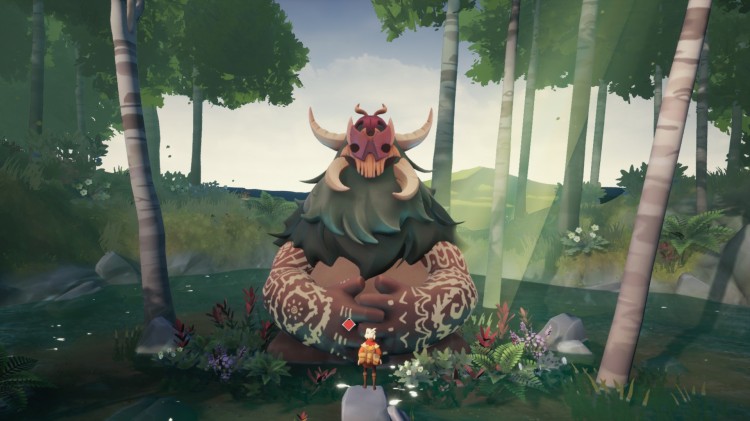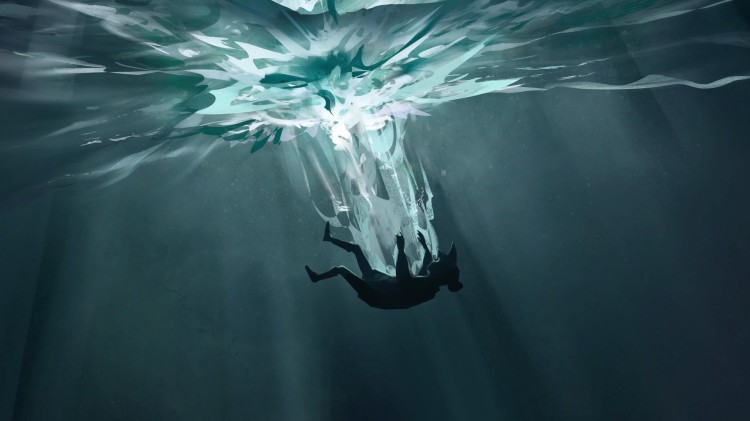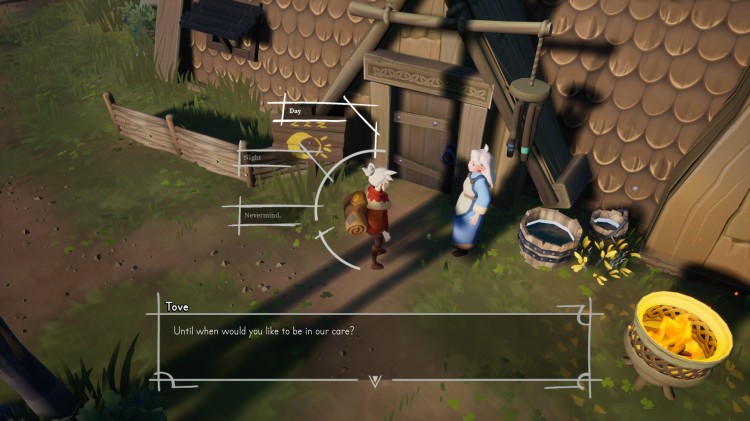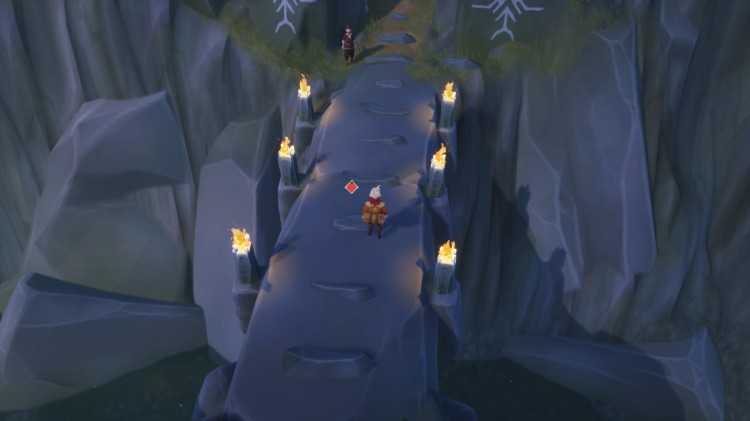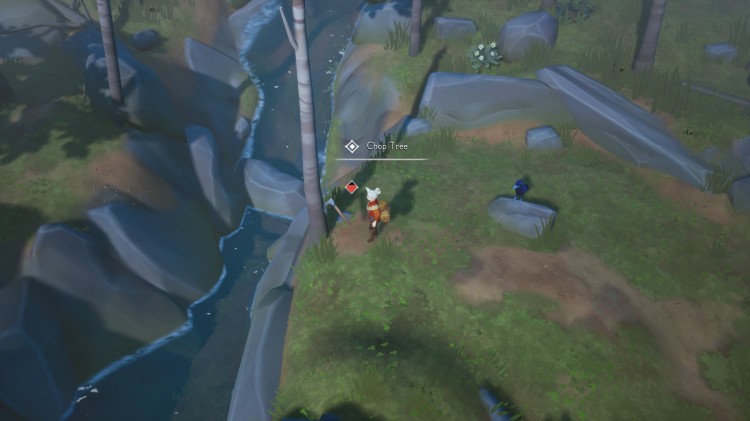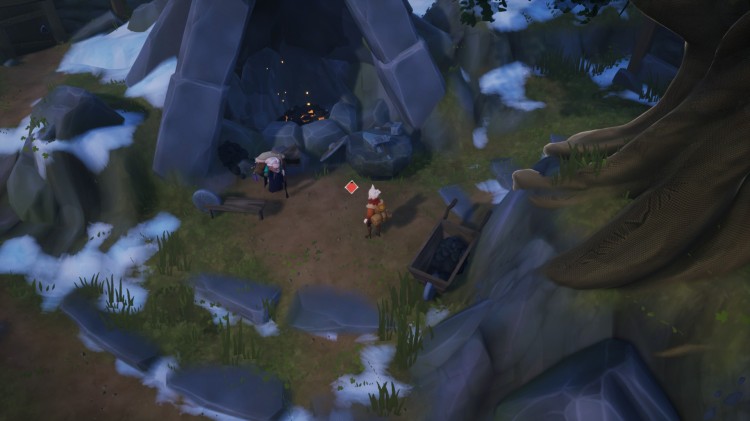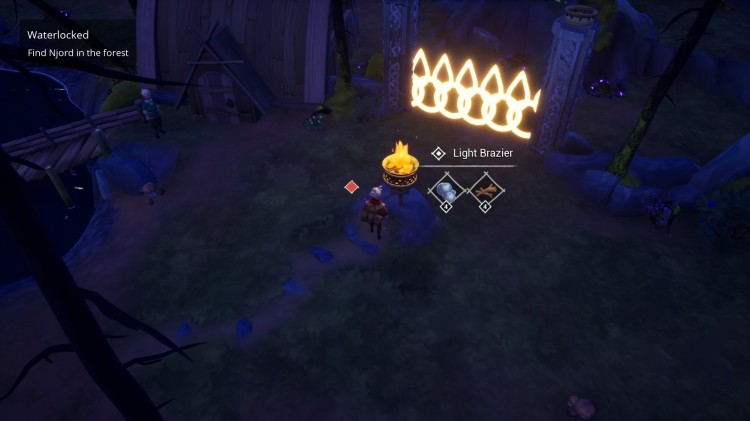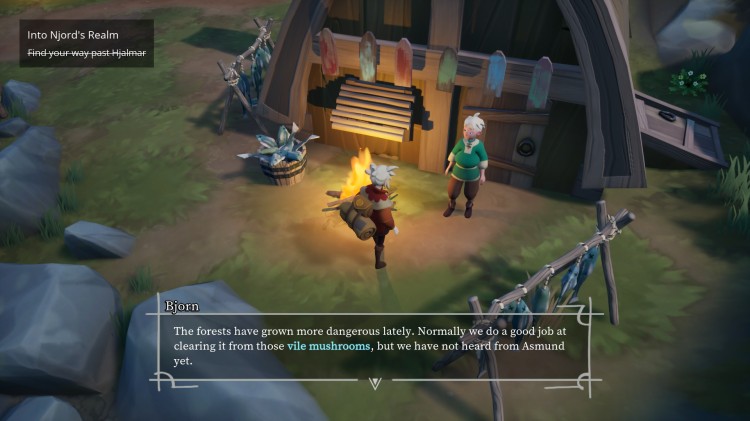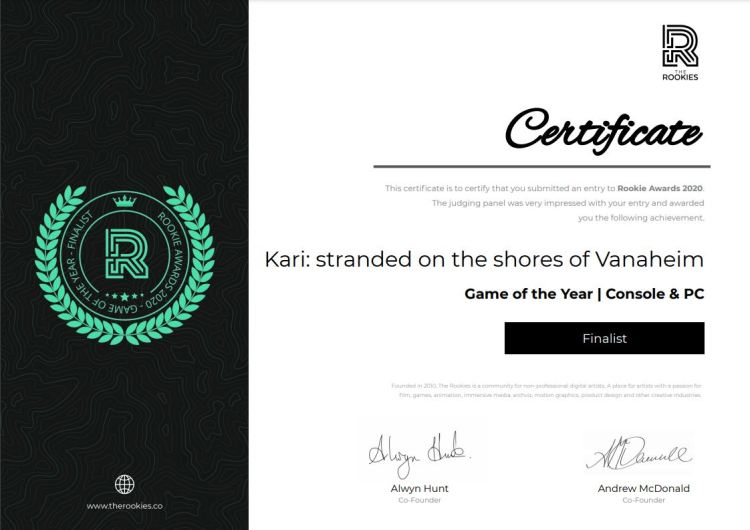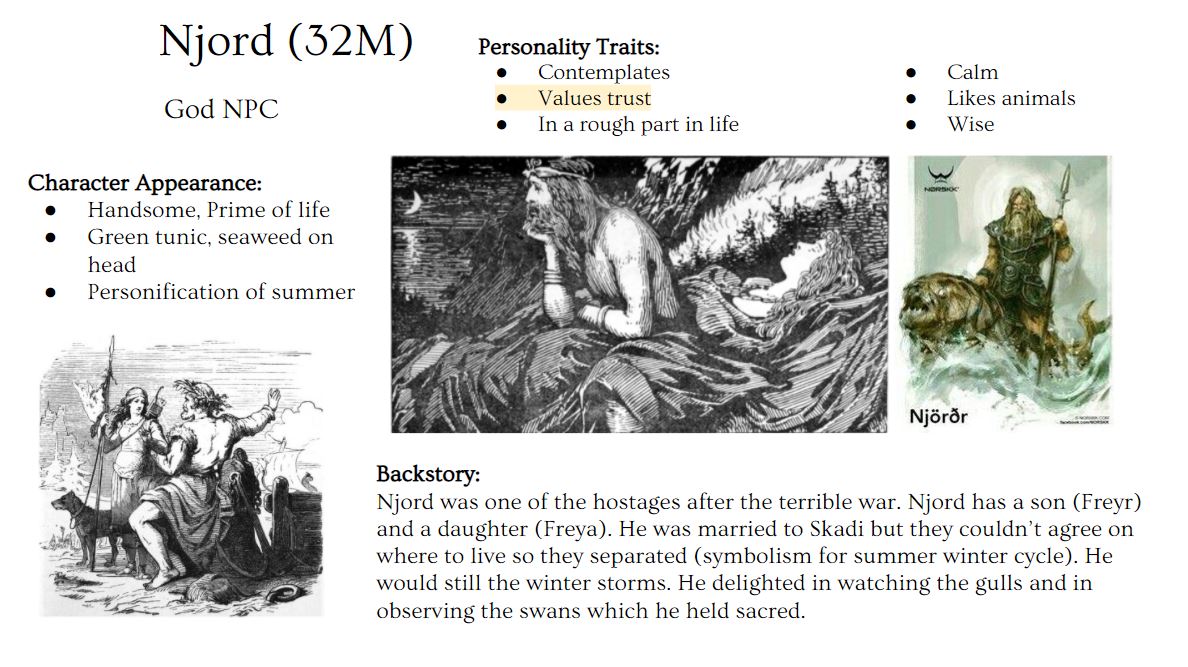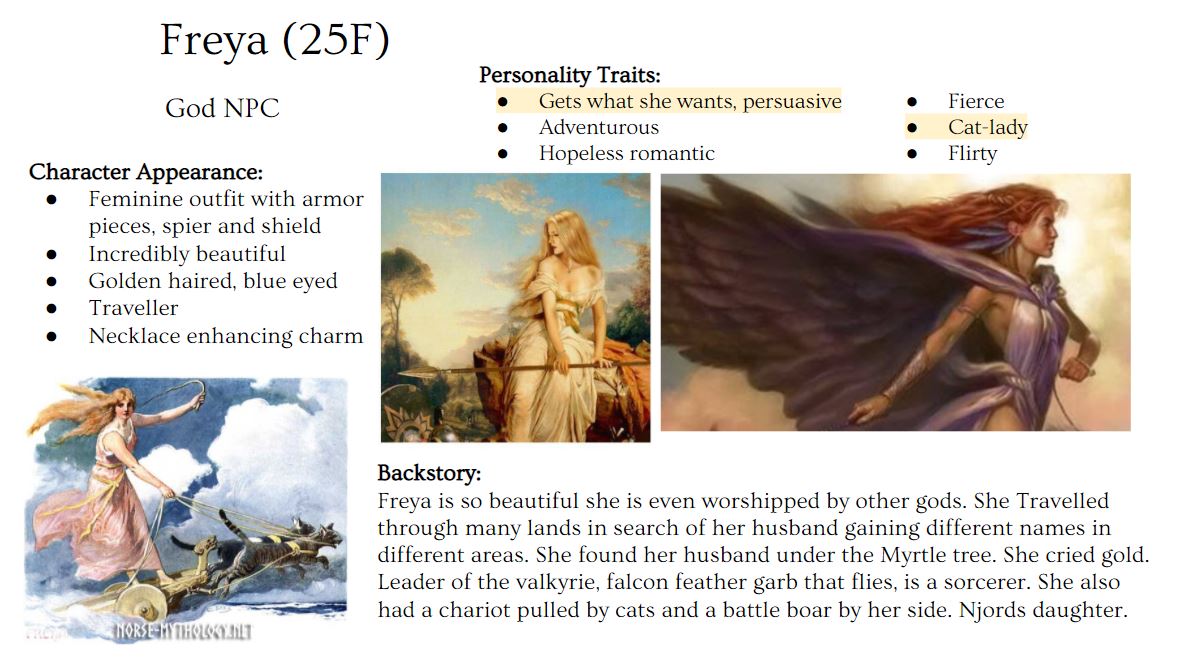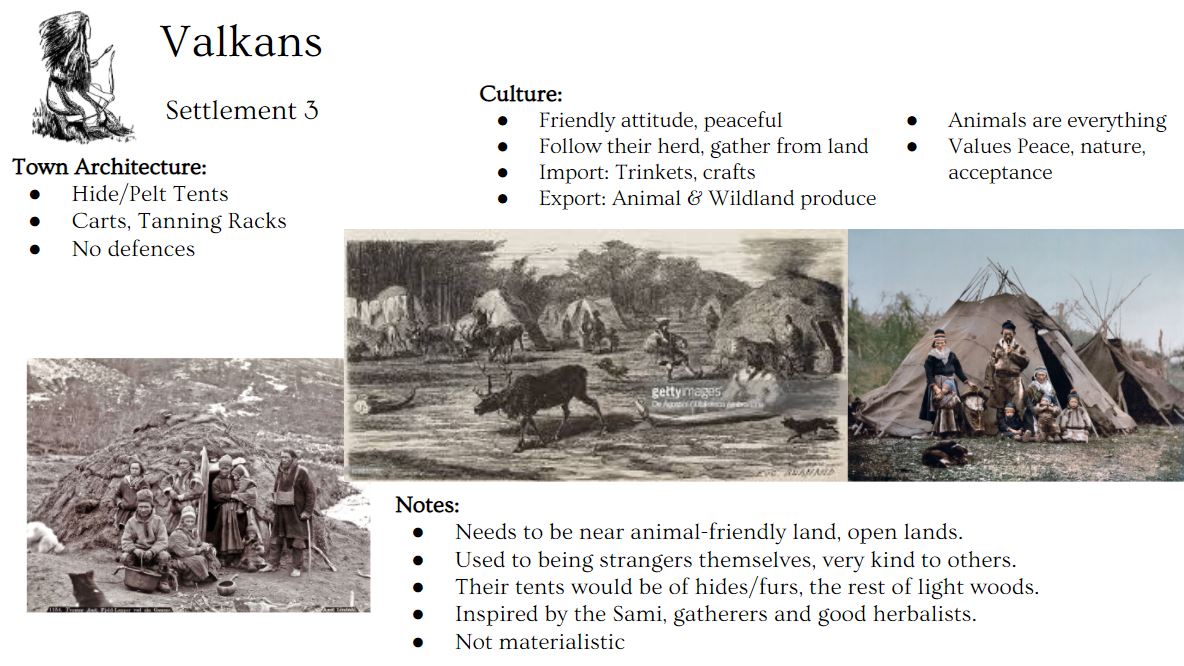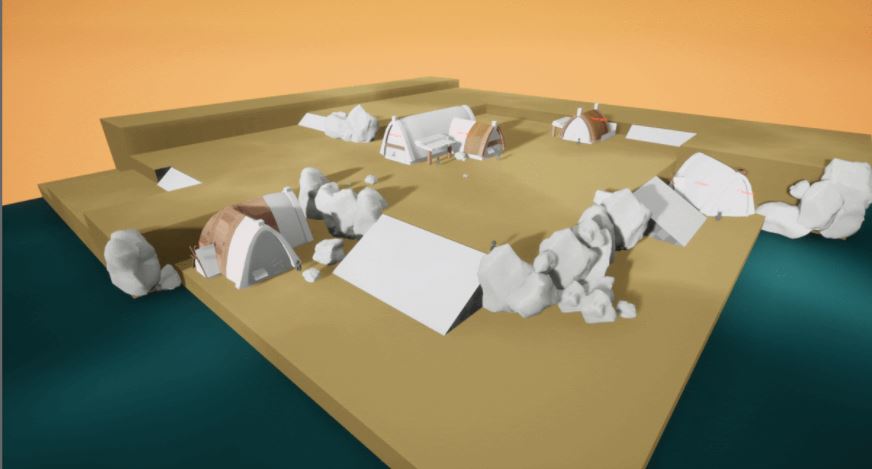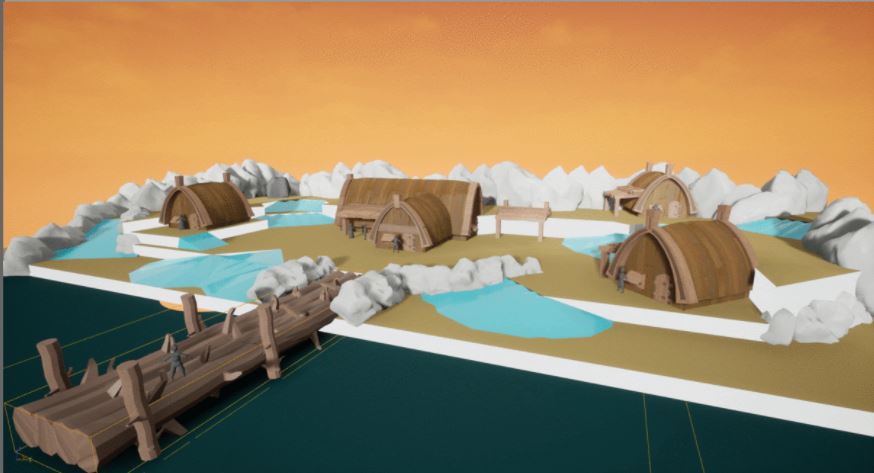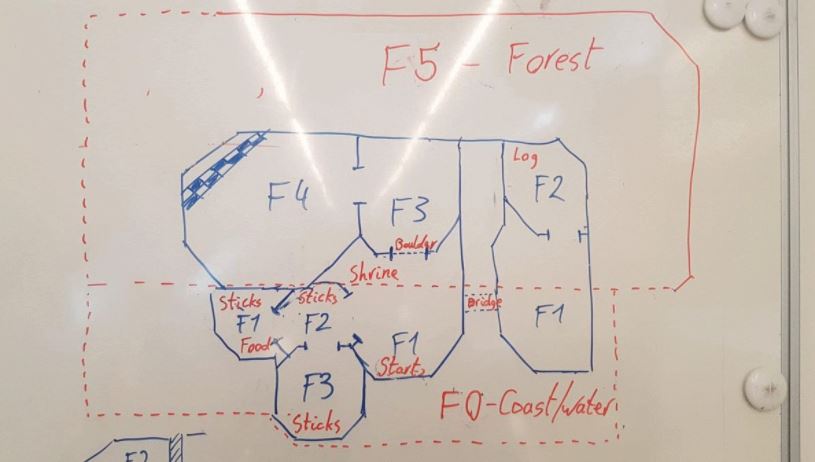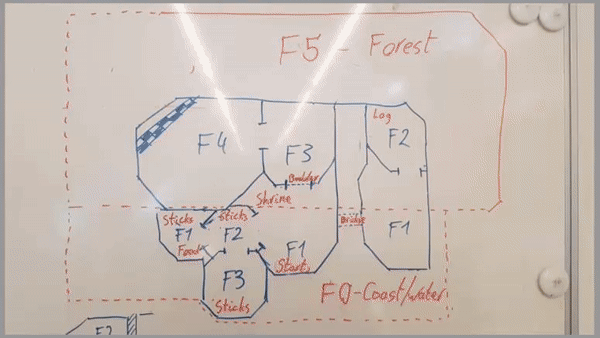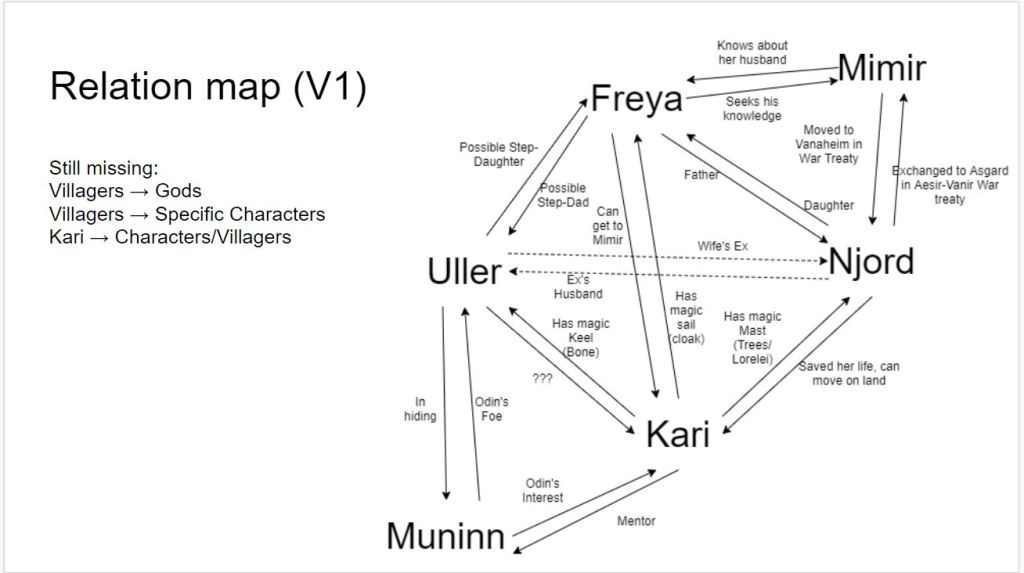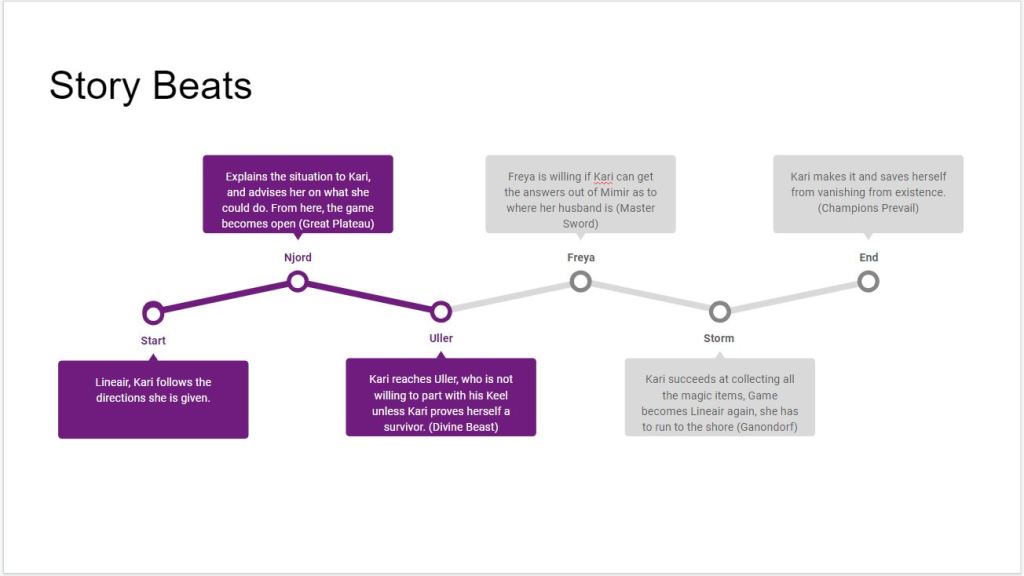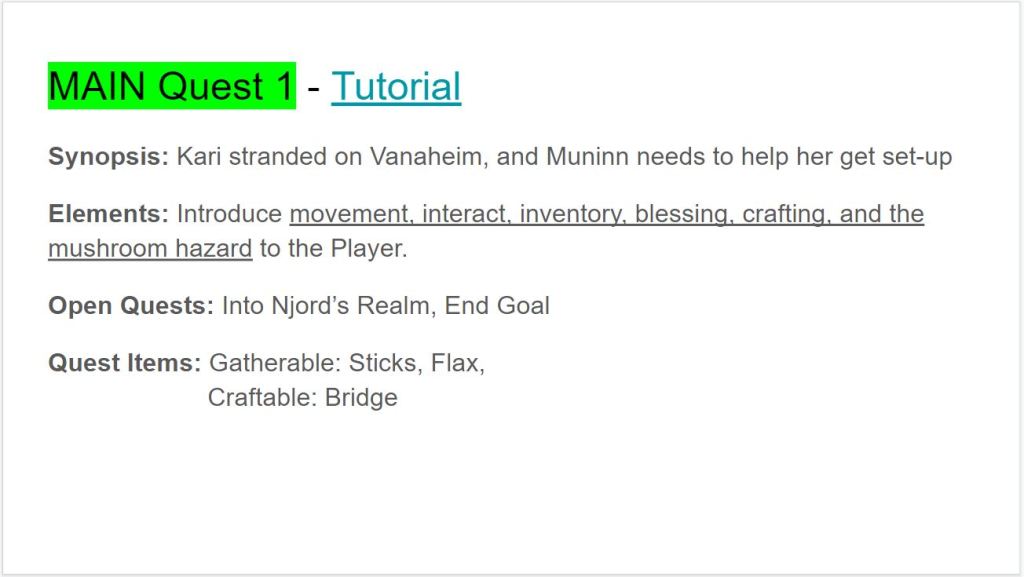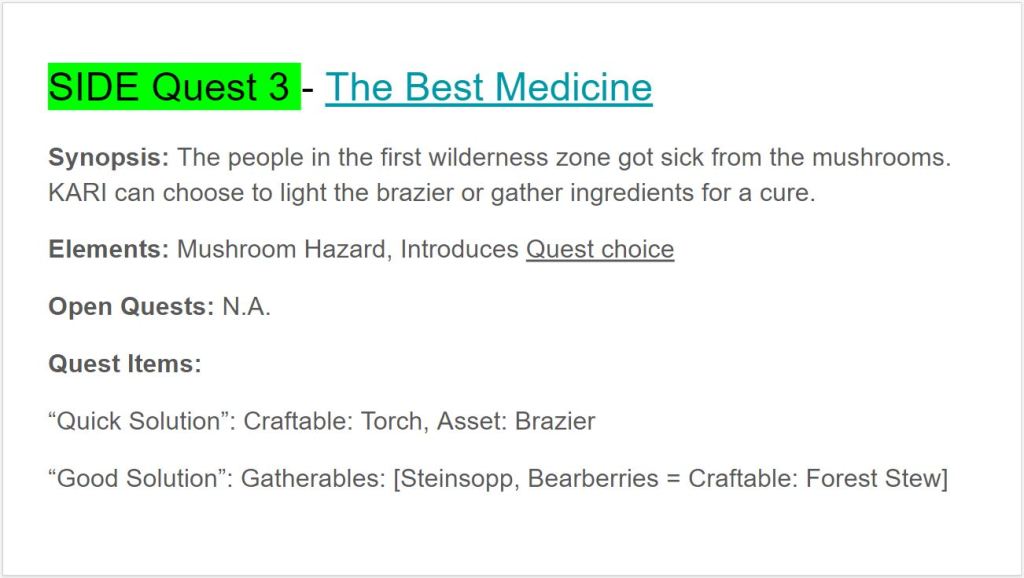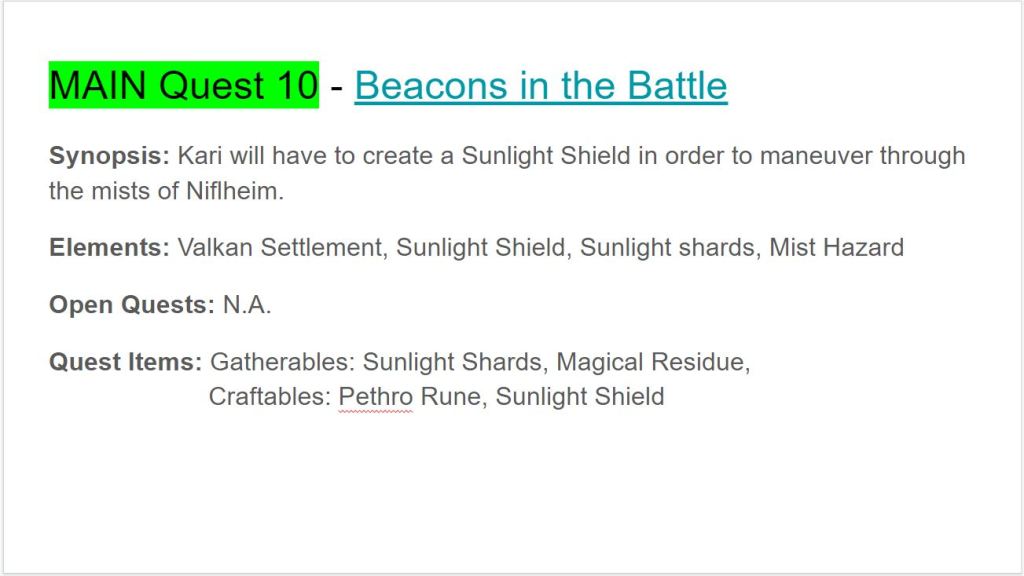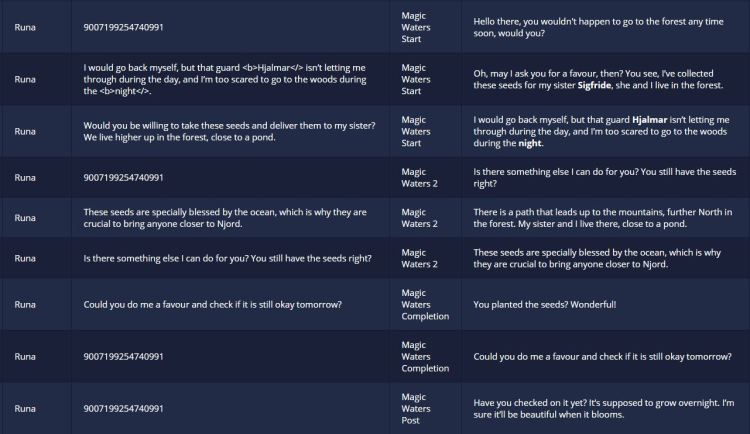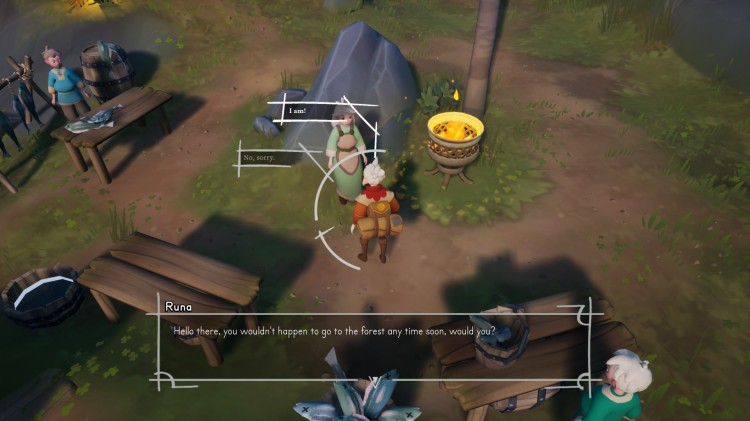Overview
Kari: Stranded on the Shores of Vanaheim is an Action-Adventure game in Vanaheim, one of the nine worlds in Norse Mythology and home to the Gods of Nature.
The player takes control of Kari, a young viking girl who stranded here due to a storm and now has to find a way home by finding new parts for her boat. But things are not as simple in the realm of Gods.
The game heavily focusses on a Narrative and Visual Journey, as Kari wanders through three distinct areas searching for what she needs to succeed.
Game Bio: Kari is an Action-Adventure game built in Unreal Engine 4
Genre: Fantasy/Mythology
Highlighted Features: Combat-Free, Time-Based Health
Technology Used: Visual Studio, Perforce, Jenkins, Jira, Unreal Engine 4, FMOD studio 2.0, Firebase
Platforms: Windows
Release Date: July 14, 2020
My Roles: Narrative Designer/Writer, Level Designer

Playtime
6-10 Hours

Development Time
1 Academic Year

Team Size
29 Students

Best Design IGAD Year 4
2019/2020

People’s Choice IGAD Year 4
2019/2020

Best Art IGAD Year 4
2019/2020

Best Audio IGAD Year 4
2019/2020

Rookies Awards 2020 – Game of the Year Finalist
Development
Foreword
Kari: Stranded on the Shores of Vanaheim was written almost entirely by me as the only team member with the Writing role, resulting in over 600 unique dialogue lines and over 20 quests to engage with in the game.
I had some help preparing a few quests before we hit production, but due to the nature of our custom database I was responsible for the implementation of each dialogue line, item description, and quest log entry that made it into the game.
In addition to that, I was also responsible for each character’s placement in the world, their quests, and dialogue functioning properly.
This gave me a lot of experience in game writing and in narrative design implementation.


Concepting & Research
We decided to write about Norse Mythology early on in the concepting phase, ignoring the well known figures (Thor, Loki, Tyr) and looking for Gods that normally don’t get their stories told. In preperation for this, I read “Tales of Norse Mythology” by Helen A. Guerber. Afterwards, I decided on a few characters to choose from together with the Art Team.
We came across the Vanas, and their world Vanaheim. We found there wasn’t too much representation of Vanaheim in other media, yet there was a lot of lore for Gods associated to this realm. This led to the cast of Njord, Freya, and Uller, with a few side characters.
I also worked together with the environment team on which three Norwegian environments we could include in the game, and what kind of cultures would fit with these areas. I compiled most of the research via One-Pagers for easy access and reference, as shown below:
Narrative Concept One-Pagers
Pre-Production – Level Design
Since I was already working closely to the environment team concepting the settlements, I also worked on each town’s concept and layout for in the game.
For the Coastal settlement, I was a part of the entire process:
After basic sketches, I made multiple block-outs to discuss with the art team before moving forward and doing a basic pass and handing it over to the set-dressers.
I made the sketches and block-outs for two more settlements, but when the workload on the narrative side became too much for me, I delegated their development over to my peers.
Besides the settlements, I also was responsible for the Tutorial level, which was the first playable level that ended up in the final product. The design team was swarmed in work so I worked out the sketch, the block-out, and then the gameplay in a single day before once more handing it over to a set-dresser.
From Thursday to Friday we had a playable level, and on Monday we had the tutorial level set-dressed.
Pre-Production – Narrative
With our characters selected and settlements mapped out, I began working out the Narrative.
I prepared a Slideshow to gather all Narrative in which included items such as: The Hero’s Journey; the rules of writing dialogue; a link to the tech design document; the quest summaries; and other relevant elements for the team.
Linked to each quest summary page was a document in which the script of the quest gets expanded on. I prepared 16 Quest documents, and with the help of another designer we wrote block-outs for each quest.
We utilized a narrative pipeline we set up, verifying each other’s work and adding comments where necessary to assure quality and consistency.
Each document’s script was adhered and updated until we hit polishing during our production.
Narrative Implementation
Once each quest had their block-out script written out and approved, I started the implementation phase.
For implementation, we used Firebase as an angular framework for our database. I ported every line from the script into the database and linked them up properly.
Working in the database came with a lot of issues. Including: memory leaks, code breaking, missing features, and a bottleneck effect for others that needed the database since only 1 person could work in it at a time. But despite all those delays and hurdles, I managed to get everything we wrote in, alongside a bunch of extra NPC dialogue we missed to foresee in pre-production.
When most of the dialogue was in the playtests and feedback required me to also go back in and clean up a lot of the lines in the database directly, leading to various documents going out of date due to the time pressure caused by these issues.
Despite all of the above, to get the narrative from the database into the project was straight forward and simple, as with only the click of a button to synch the database and engine up, everything was immediately updated. I could then immediately test out the changes in editor, without having to relaunch or recompiling the editor.
Further Reading
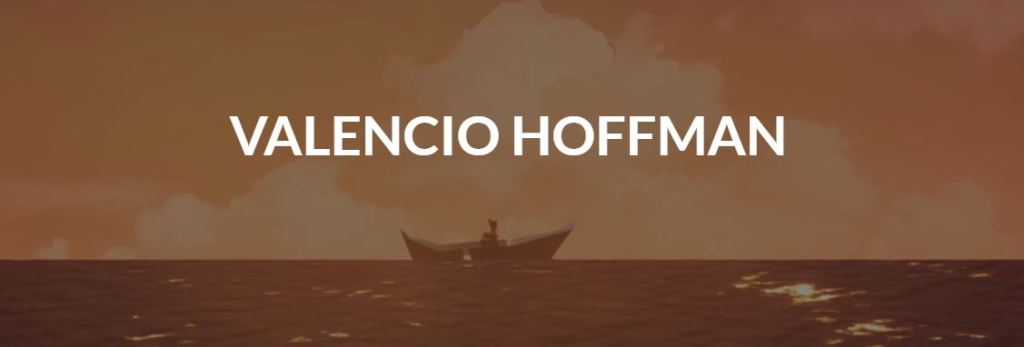
To find out more about the database and the massive improvements it has gotten since Kari’s Development, please consider visiting Valencio’s Portfolio page on StoryTime. It is the evolution of what I worked with, and has greatly improved in User Experience since.
https://vamidicreations.nl/portfolio/storytime/
Hardest Challenges
Kari: Stranded on the Shores of Vanaheim is the first project in which I really got to focus on Narrative Design as a role with responsibility. Kari definitely came with unique opportunities and challenges, such as:
- Finding how to best format scripts and dialogue for a video game instead of a novel.
- Dependencies on tech that can lead to massive delays and crunch to catch up.
- The pandemic that started halfway through the development of Kari.
- Covering for all the unforeseen dialogue stories and NPCs. A lot of barks and interactions weren’t planned for but were added to the game.
- The pure workload of being solely responsible for writing all narrative and implementing it, and how to cut it down to manageable chunks.
Learning Achievements
Kari has been an eye-opening and valuable learning opportunity, and the amount of experience and understanding I gained during the development cycle is hard to summarize in a few bullet points, but some key take-aways I can confidently address are:
- Getting proper experience surrounding the implementation and production of Narrative for a video game that relies heavily on story.
- The value and necessity of narrative tools that work consistently without taking time away from other developers.
- In terms of level design, how to create interesting levels for settlements and safe spaces that don’t contain any challenge / encounter.
- How to adapt existing material and mythology into a functional video game script and environment.

